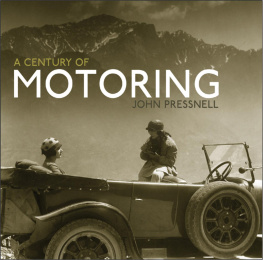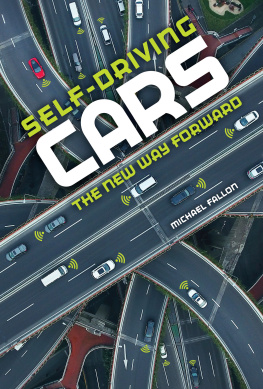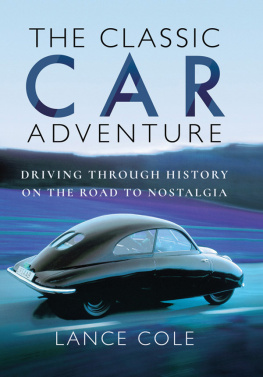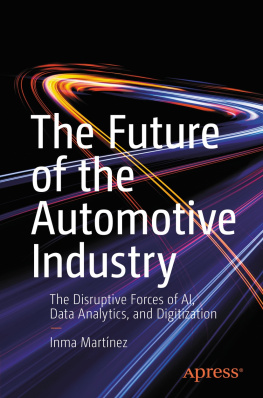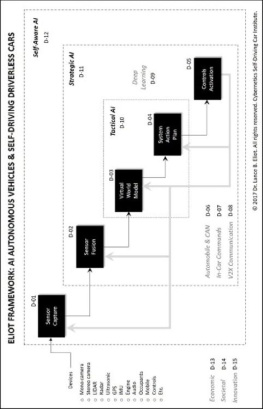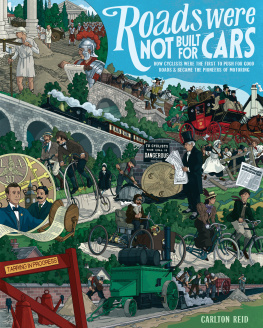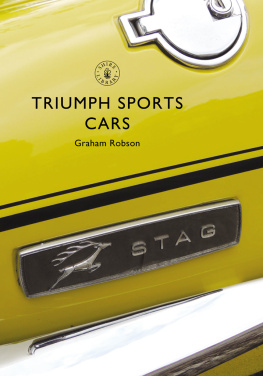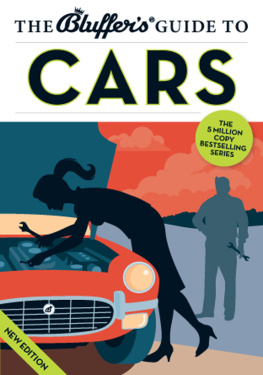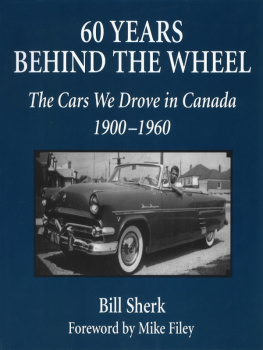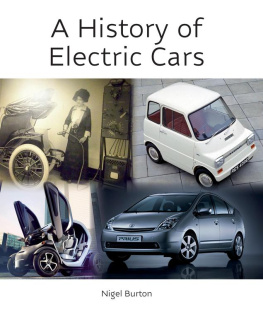A CENTURY OF
MOTORING

CONTENTS
INTRODUCTION
The first motor car arrived in the British Isles in 1895. Within a year the permitted speed for these new devices was raised from 4 mph to 12 mph. Whether known as an autocar, an automobile, a motor, or simply as a car, the machines were initially little more than playthings for the rich and as such encountered much popular and press hostility. In 1904 registration numbers and driving licences were introduced, along with a 20 mph speed limit.
By 1914 the motor car had taken its definitive form. Tiller steering had at last disappeared in 1911; the front-engined, rear-wheel-drive systme Panhard was almost universal; coachwork was moving away decisively from its horse-carriage roots; electric lighting was increasingly a regular fitting; even unit construction of body and chassis was being essayed. At the same time a new industry was forming, with mass-production by Ford and Morris poised to drive car-ownership upwards aided by new lower-cost cyclecars and light cars. Meanwhile British car and commercial production had risen from 12,000 vehicles in 1907 to 44,000 in 1913.
The First World War was to be the first motorised conflict, and one that would see a generation of soldiers gaining experience of the automobile. With the end of hostilities, motoring took off. In 1914 there had been 132,000 cars in Britain; this figure rose to 242,500 in 1921, and by 1924 there were four times as many cars on the road as in 1919. Numbers continued to climb, until in 1939 total registrations hit the 2 million mark.
Talk of cars for everyman was fanciful, however. In the inter-war years the cost of a car decreased sharply in real terms, both because prices were being reduced and because earnings were increasing. But in 1934 The Economist calculated that an annual income of approaching 400 was still needed to run a car, at a time when the average annual wage was less than half that figure. Unsurprisingly, motorcycles accounted for roughly 40 per cent of private vehicles at the time.
The impact of the motor car was considerable. Cars opened up the country. Motor touring led to the discovery of rural England by town dwellers. Holidaymakers and daytrippers transformed coastal areas and even more so when they chose to build holiday or retirement homes, leading to rashes of bungalow developments and so-called shanty towns. Cars also allowed people to live in the country, or outside town in one of the new suburbs, and to drive to work or to the station from which they could commute to town. Arterial roads out of major towns led to ribbon development alongside the new highways.
Post-war, the democratisation of the motor car was slow. In 1955 one household in five had a car, but among households termed working class the figure was one in fourteen. Ten years later, the figures were respectively two in five and one in five. Today, car ownership is universal, and by the turn of the millennium there were over 25 million private cars registered in the United Kingdom.
Dressing for the motor car
circa 1908
While the gradual disappearance of open-cockpit coachwork had lessened exposure to the elements, it was still necessary in Edwardian times for motorists to be appropriately garbed. This was not just because cars were generally open-bodied, with the occupants sitting high and unsheltered, but also because of the dust raised on the unsealed roads of the time.
The wealthy went to suppliers such as Dunhill, Burberry or Aquascutum, or had their tailor or milliner confect suitable items. A sturdy coat, long and usually double-breasted, was a basic requirement. Leather was one choice, as it was windproof, but breathable materials such as tweed and Irish frieze (a coarse-woven woollen cloth) were also popular, as were proofed coats in gabardine (invented by Burberry) or aquascutum (a waterproof wool which gave its name to the eponymous company).
Coats were likely to be fur-lined and possibly fur-trimmed, sometimes in exotic furs such as puma, opossum, seal or leopard. Coats wholly of fur were also seen, but held dust and were unpleasant in the wet. A leather waistcoat might be worn underneath, and gloves, goggles and a cap (often with ear-flaps) were vital items of equipment.
Ladies protected their heads with hoods, perhaps equipped with mica or silicone visors, or covered hat and face with a veil. Full-face masks were sufficiently bizarre to be a minority interest. Feet, meanwhile, might be kept warm by fur overboots or foot muffs, accompanied by a fur knee apron for the lower body, and maybe even a pair of leather motoring knickers.
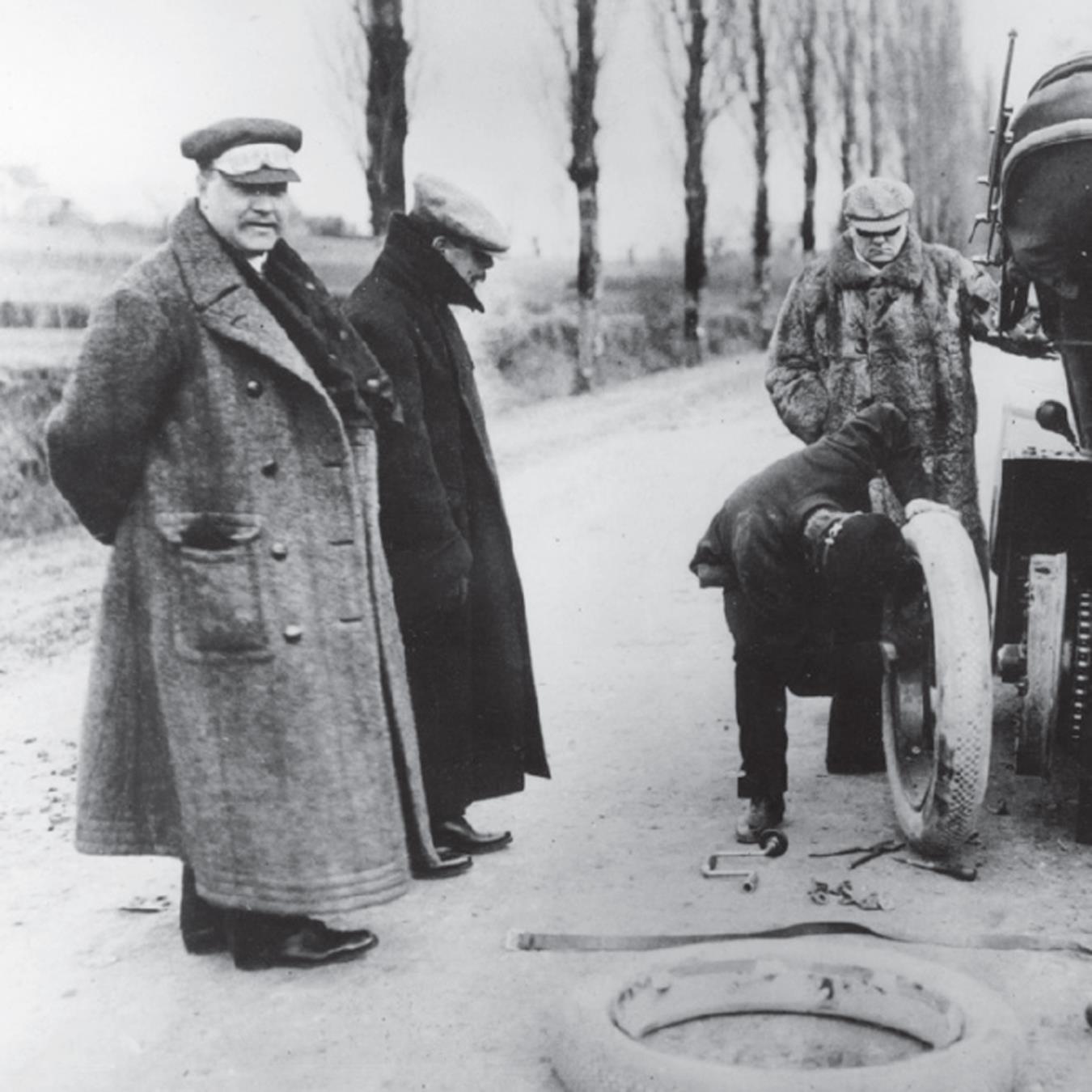
Model T with staff of Fords London office
1912
If by the outbreak of the First World War one car could be said to have started the long haul to popularising motoring in Britain, it had to be the Ford, British assembly of which had begun in 1911. The reasons why British motorists took to the Model T were simple. Mass-production methods, as pioneered by Ford in the US, meant that it was cheap: at 135 in 1914 for a four-seat tourer, it cost 40 less than the first Morris Oxford. Crucially, too, it was light but robust, and made of high-quality metals. It had a two-speed transmission with gear engagement by pedal, and with its low-stressed 2890cc four-cylinder engine it was capable of good performance for the time, with a maximum speed of just over 40 mph.
Initially the Ford was sneered at by many, who regarded a hand-assembled British motor car as being the only motorised transport suitable for gentlefolk. Such arguments did not last long, and by 1919 a full 41 per cent of cars on the roads were Fords. Motoring magazines devoted special sections to the Model T, and countless firms offered accessories to improve or embellish the car.
Inevitably, though, Fords dominance started to be eroded as the car became more old-fashioned. The Model T was also dealt a blow by the 1921 revision of the horsepower tax, a change specifically intended to deter the purchase of cars of American origin with large-bore engines; despite this, only in 1924 did Ford lose market leadership.
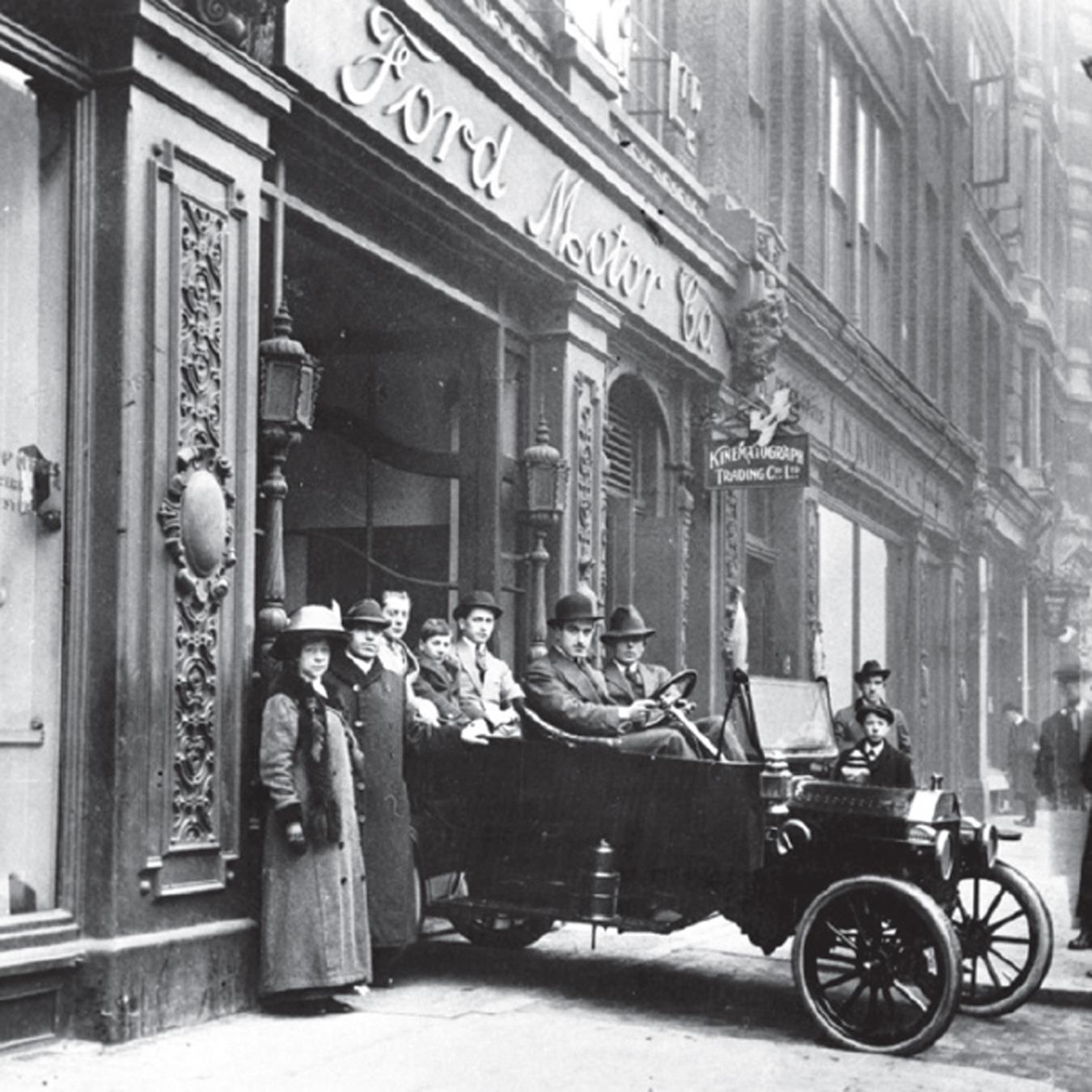
GN cyclecar in Regents Park, London
1915
In the years immediately before the First World War a new form of minimalist motoring arrived, in the form of the cyclecar. Using a motorcycle engine, or similar, and often driven by a chain or belt to the rear wheels, they were lightweight, crude, and frequently of eccentric design; one, indeed, the French Bdlia, went so far as to seat the passenger in front of the driver.
Such vehicles had the virtue of being cheaper than a conventional car, but were not, however, the only game in town. For those who could afford a little more, another new breed of vehicle was the so-called light car literally a shrunken version of an orthodox car and powered by an engine of around a litre in capacity. The model that rose to prominence in this category, following its 1913 announcement, was the 1018cc Morris Oxford.
Astonishing as it may seem, leisure motoring continued to be permitted well into the First World War; indeed, the motoring community felt grievously offended by any suggestion that it might be a morally questionable extravagance at such a time. Motorists were doing their patriotic duty and helping the war effort, it was maintained, by having a car in which to drive wounded soldiers to tea. It was only in November 1917 that petrol was rationed. That same year the import of motor vehicles was banned, domestic manufacture having largely dried up as car-makers turned to making munitions and the like.

